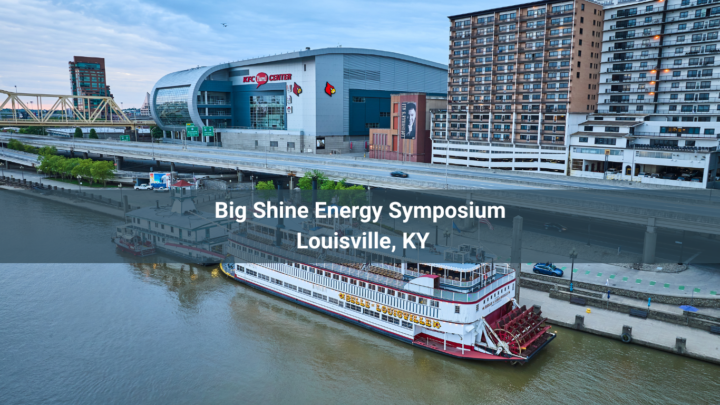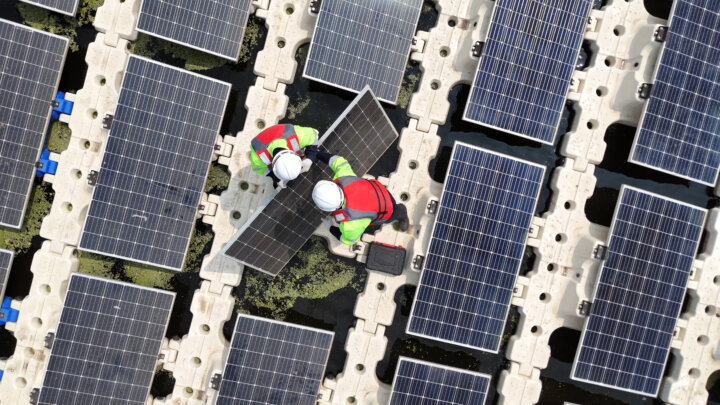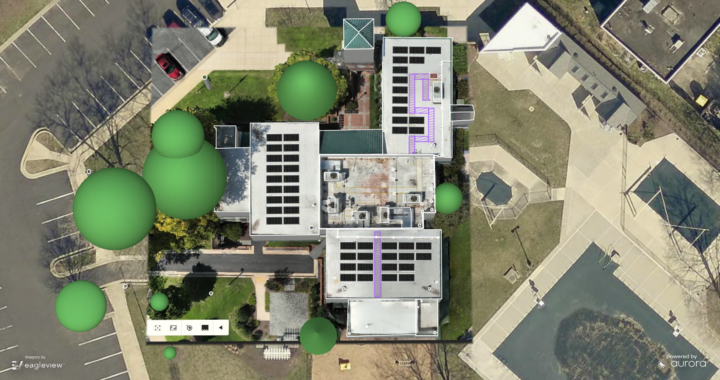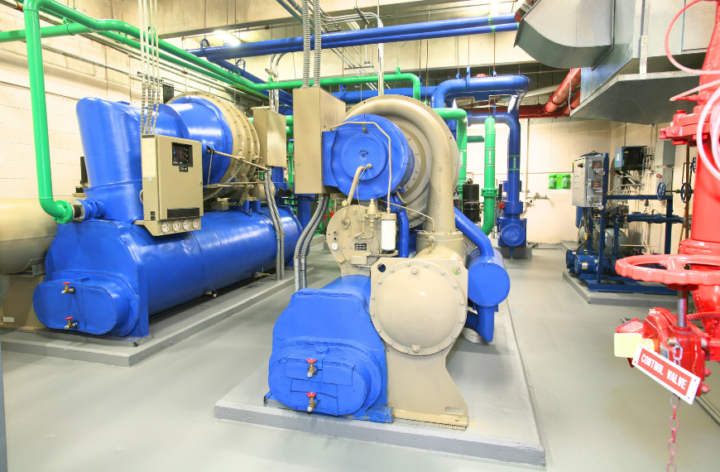When we walk into a commercial office building, shopping mall, hospital, campus center or industrial building, we take for granted that all of the building systems will be operating smoothly. This is the responsibility of operations directors, building managers, and facility engineers. When these busy professionals are challenged to cut costs, upgrade or re-configure the space, they may call on their CFO, planners, designers, as well as outside architects, engineers and construction firms to help with evaluating alternatives. Things like qualifying for incentives, upgrading to energy-saving equipment, and choosing the best solutions.
There have always been heavy demands on the building manager’s time. The challenges of the past year have suddenly brought new priorities into focus. Cutting operational costs is more important than ever. And we all recognize that now is the time to take steps to safeguard our future by reducing climate change.
Fortunately, we have three things working for us.
First, an array of energy-saving lighting, controls and HVAC technologies are available for immediate retrofit as well as for new construction. Second, performance standards such as LEED v4 provide us guidance in using energy modeling, an integrative design process, and setting targets above the minimums now required by energy codes; and Third – for retrofits of our existing buildings – there are still rebates and incentive programs for many energy-conservation measures. Qualifying for incentives can sometimes be a challenge.
But there’s something we shouldn’t overlook.
As we plunge into the process of conducting audits and forecasting the benefits of changes, there is one critical building system that tends to get overlooked: our building ground and the electrical distribution wiring and equipment. Whether we are just upgrading to LED lighting, or going well beyond with VSD and VAV HVAC equipment, a Solar PV system and EV charging stations, all of these have one need in common: all are ‘electronic-intensive’, so all require good power quality, good ‘grounding’ and safe wiring.
When everything seems to be working OK with the building as it is, it’s easy to assume that the electrical system is fine.
Aside from not qualifying for incentives, neglecting to check this exposes us to several other risks.
For example, traditional lighting such as metal halide and fluorescents operate by applying high voltage to create a mercury vapor arc inside the tube or bulb. Because of the way they operate, these lights are not very sensitive to power quality disturbances. In contrast, LED lighting requires a precision electronic power supply called a “driver”. The driver converts higher voltage AC current into the carefully regulated DC current required by the semiconductor LED chips.
The driver, and the LEDs themselves, must be protected from voltage spikes and other disturbances. This is accomplished by surge protection devices (SPD) which become conductive when voltage exceeds a pre-set threshold. In order to divert the voltage spike away from the driver, the SPD must be connected to a low-resistance path to ground. Here, ‘ground’ means literally to the ground around the foundation of the building. Most LED fixtures have a modest-capability SPD built into the driver, and installers will sometimes add supplemental SPDs externally for exterior lighting or inside industrial buildings with heavy machinery, welding machines and the like.
One complication is that most power quality issues cannot be detected using common electrician’s meters.
We can visualize the problem using a voltage waveform that was captured using a specialized power quality meter:
Figure 1: Impulse transient detected at 160 milliseconds

We should be seeing a nice, uniform sine wave, but instead we can see that the crests are distorted, and at 160 milliseconds into the recording a huge voltage spike appears. The technical term for this event is an ‘impulse transient’, and these are very damaging to electronic equipment. Impulse transients rise and fall in only a few microseconds, so the meter must have a very fast sample rate to be able to catch them. The old fluorescent tubes weren’t much bothered by this, but LED fixtures and modern HVAC, PV and EV equipment can be.
Unlike a lightning strike next to your building, impulse transients as shown here rarely cause electronic equipment to fail right away – the SPD in the driver is there to protect the delicate electronic components. Instead, if repeated spikes jab the SPD again and again, month after month, the SPD will eventually fail, leaving the driver unprotected. Rapid fluctuations in voltage can also cause a progressive damage due to circuit heating, even if the magnitude of the variation isn’t very high. Take a look at the next waveform in Figure 2:
Figure 2: Rapid Fluctuations in Voltage

Why take a risk when you can prevent it from happening?
Happily, it’s often not too difficult or very expensive to take a little preventative medicine when upgrading your facility. If you are planning a major facility sustainability upgrade, a formal power quality survey is recommended. For incremental upgrades, as a minimum here are some points to review with your sustainability team:
1. Have we tested the building ground resistance? The resistance to earth ground, from fixture/equipment to the building grounding electrode, can increase with age, corrosion or damage. Some types of grounding electrodes, such as driven ground rods, have a life of 15 years or less depending on soil conditions. The Electrical Inspectors Association recommends testing at least every three years and, preferably, every year. The National Electrical Code specifies a maximum ground resistance of 25 Ohms (a standard developed in the 1930’s, before today’s electronics), and both the NFPA and IEEE recommend less than 5 Ohms for modern computer and electronic equipment, including solid-state LED lighting.
2. Check the distribution panels (main panel and sub-panels) to confirm a proper neutral-to-ground connection where it should be, and absolutely no neutral-to-ground connection where it shouldn’t be. Even experienced electricians are sometimes confused about this point, which is a serious electrical code violation. The International Association of Electrical Inspectors has a directory of experts in each state if you need back-up support.
3. If there has been any history of electrical problems such as tripped circuit breakers, unexplained blinking or dimming of lights, overheating motors or computer failures, these are strong tell-tale signs of electrical problems that must be resolved before adding new technologies to the system.
4. Best practice in commercial buildings is to be equipped with ‘surge protection in layers’. The first layer is an SPD at the building power service entrance. This is known as “Zone 1 surge protection”. Next, there must be a coordinated SPD in the lighting distribution panel (“Zone 2 surge protection”). The term “coordinated” has a specific meaning here; many electricians have not trained on details of selecting SPDs to match the electronics being protected. Big Shine LED fixtures are equipped with built-in and, for outdoor and for heavy industrial facilities, supplemental SPDs. Together these constitute “Zone 3 surge protection”. If LED fixtures are installed in a building lacking Zone 1 and/or Zone 2 protection, then the lighting fixtures will become the preferred path to ground for any voltage disturbance in the building. LED fixtures are not designed to cover for missing or improperly-specified Zone 1 and Zone 2 surge protection.
5. In the past, it was accepted practice at ball parks, parking lots, and traffic lights to only run power conductors to the pole. The concrete foundation was assumed to be an acceptable “ground” – but this required that fault current (resulting from a ‘short-circuit’) could make it back to the source “through the dirt”. People have died because of this faulty assumption. The National Electrical Code states that “The earth shall not be considered as an effective ground-fault current path.” NEC 250.4(5). This was added because people have been shocked and even killed touching light poles that had bad wiring inside, but not enough current flowed back to the source through the dirt to trip the circuit breaker.
6. Never get close to an open panel that is energized, even to look inside, unless you are a trained professional with proper ‘PPE’ – personal protection equipment. Electrical accidents can include shock, electrocution and arc-flash; these are tragic, terrifying and preventable.
When you’re grounded, everything works.
The language of electricity is arcane, and we don’t bring this up to sound scary, rather to emphasize that an ounce of prevention can be included in your Sustainability planning. When the prevention isn’t taken, many projects still go well, but some do not because the facility had hidden problems that will manifest as reduced equipment life and service call headaches. At Big Shine Energy, we want every one of your Sustainability Projects, from LED and HVAC to Solar PV, to be complete successes, earning a great ROI and doing good for our planet. Call us today!
August Kruesi, CTO
